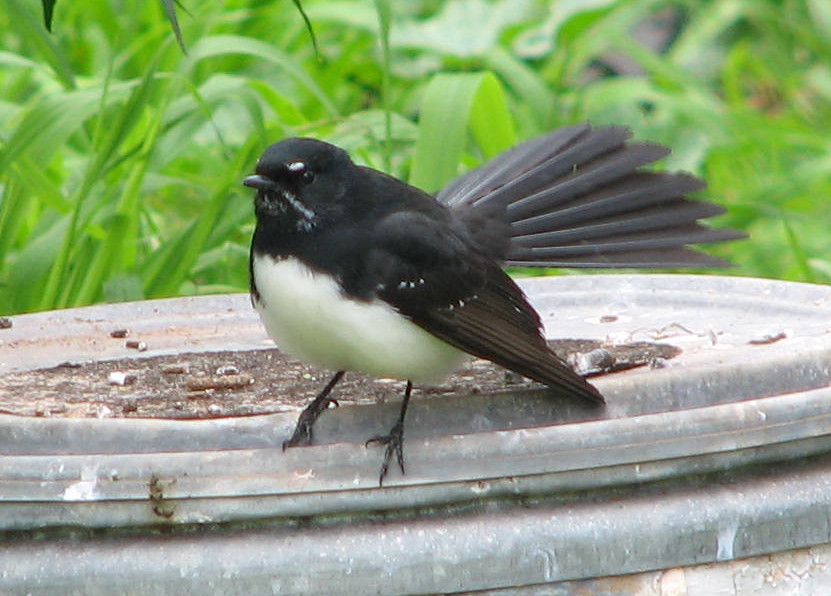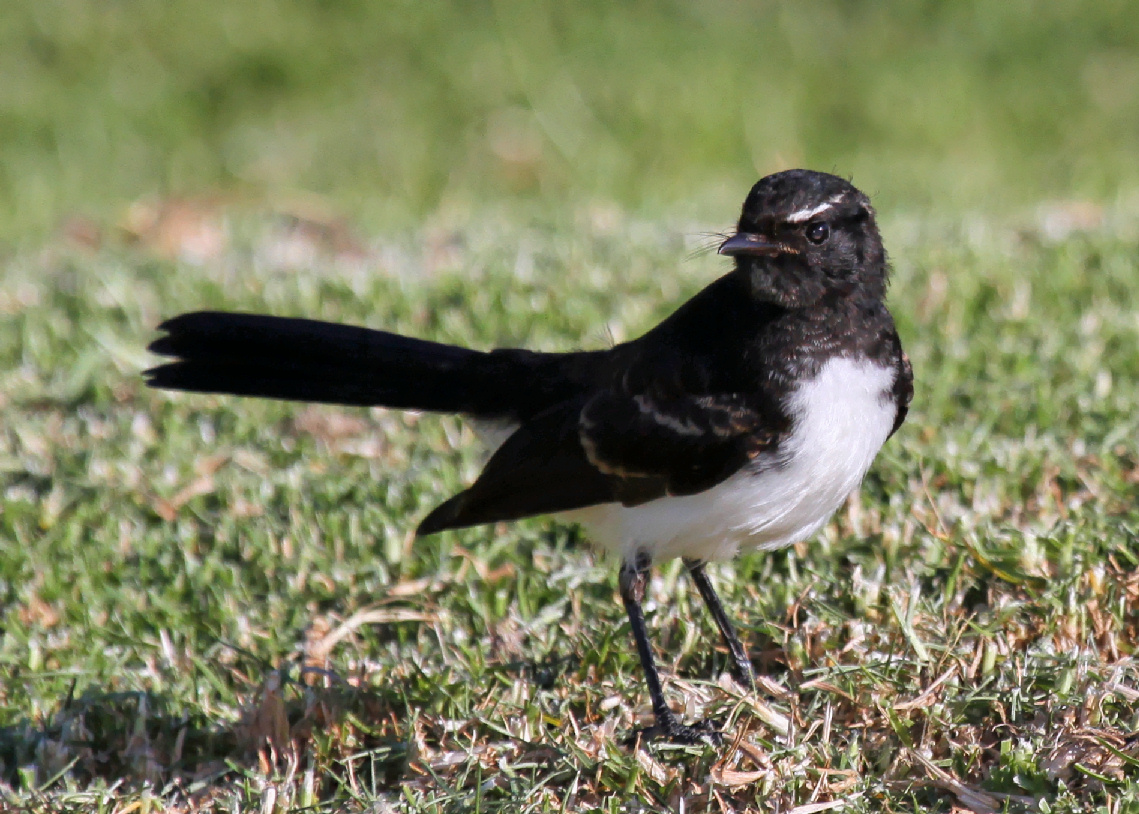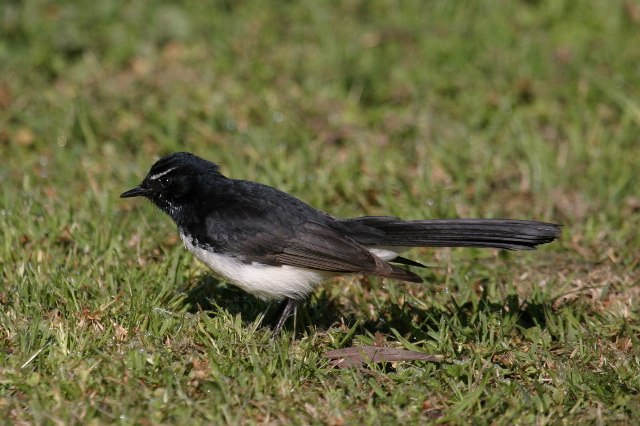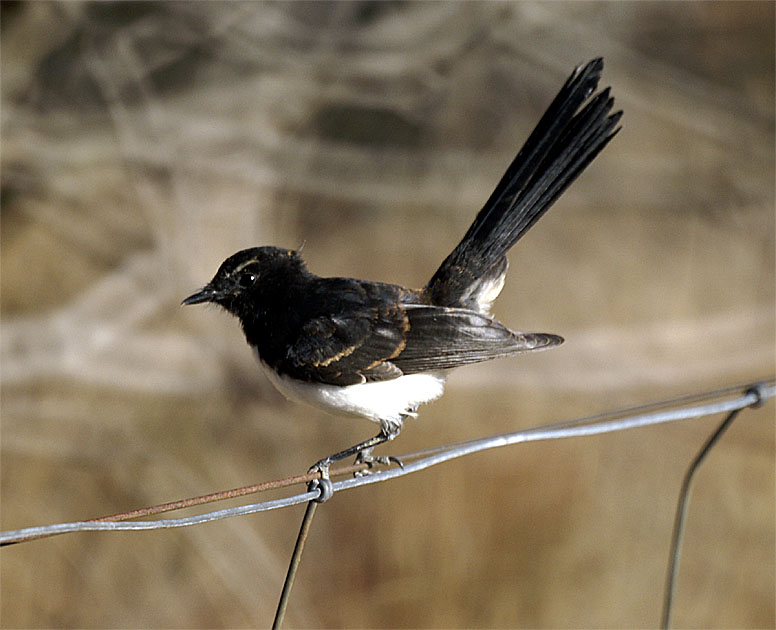
Rhipidura leucophrys
TAXONOMY
Turdus leucophrys Latham, 1801, Sydney, Australia. Three subspecies.
OTHER COMMON NAMES
English: Black-and-white fantail; French: Rhipidure
hochequeue; German: Gartenfдcherschwanz; Spanish: Cola de
Abanico Blanco y Negro.
PHYSICAL CHARACTERISTICS
7.1–8.7 in (18–22 cm); 0.6–0.8 oz (17–24 g). A large bird with
black plumage and white brow and breast.
DISTRIBUTION
R. l. melanoleuca: Moluccas, New Guinea, and surrounding islands,
Bismarck Archipelago, Solomon Islands; R. l. picata:
northern Australia; R. l. leucophrys: southwest, southern, central,
and southeast Australia.
HABITAT
This species can be found in almost any habitat except the
densest rainforest or eucalypt forest; it prefers relatively open
areas, from sea level to 9,240 ft (2,800 m).
BEHAVIOR
Terrestrial for much of its time, running, walking, or hopping
on the ground. As it does so, the tail is usually held elevated
but not often fanned. When pausing, the tail is constantly
waved from side to side and up and down. The willie wagtail is
usually seen singly, although mates often are nearby. A conspicuous,
active, and bold bird that often draws attention to itself
by harassing or attacking larger animals that are considered
as predators or enter territory during breeding. An aggressive
individual, it conspicuously expands its white eyebrows. In Australia,
this species is mainly sedentary or locally nomadic, while
in New Guinea it may leave some areas in the dry season, returning
to breed during the rains. The song, rendered as
“sweet pretty creature”, may be heard incessantly during
breeding, often throughout a moonlit night. There is also a
harsh scolding note given when a bird is agitated.
FEEDING ECOLOGY AND DIET
Feeds on insects, larvae, and occasionally small lizards. Much
food is obtained by hawking from perches for insects on the
wing, or snatching them from ground after short runs.
REPRODUCTIVE BIOLOGY
Although breeding occurs mainly in Jul.–Feb. (Australia), this
species can nest in any month, conditions allowing. This may
yield up to four or more broods to be reared in a season. Both
parents share nest building, incubation, and care of the young.
The nest is made of grass and fine bark strips, covered with
spider web, but it lacks the tail of most fantails; this is placed
on horizontal fork or in man-made structure or other suitable
site, usually less than 16.5 ft (5 m) above the ground. The
eggs are cream with brown and gray speckles forming a
wreath at larger end. Incubation, 14–15 days; age at fledging
14 days.
CONSERVATION STATUS
Common throughout its range.
SIGNIFICANCE TO H UMANS
A well-known and popular bird in Australia. In parts of New
Guinea it is considered to be a gossip or the ghost of a paternal
kinsperson bringing good luck.
Photo Gallery of - Willie wagtail




 Animalia Life
Animalia Life